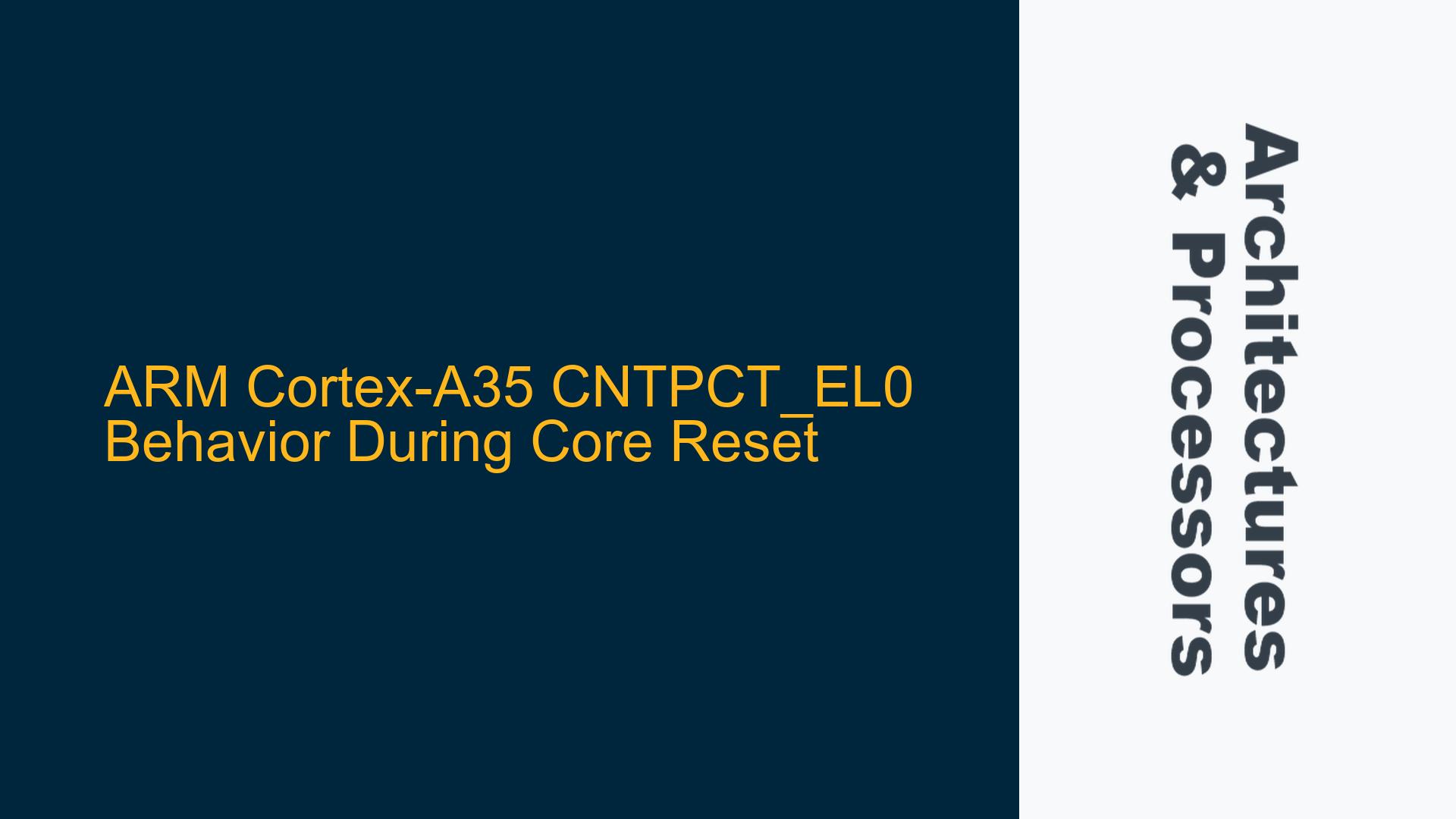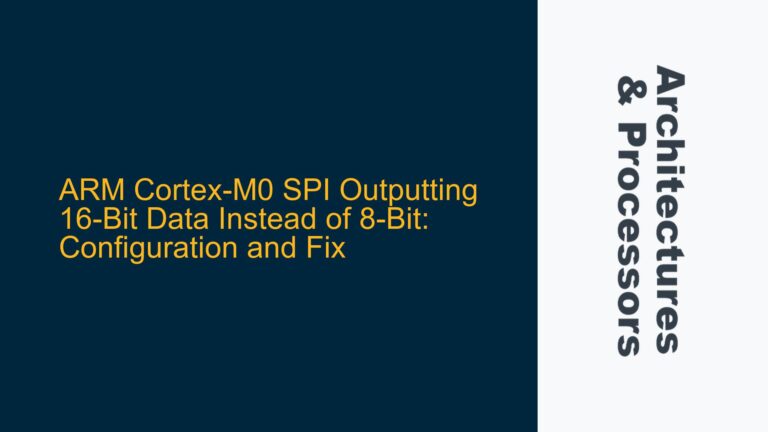CNTPCT_EL0 System Timer Continuity During Core Resets
The behavior of the CNTPCT_EL0 system timer during core resets in ARM Cortex-A35 processors is a critical consideration for developers working on multi-core systems, particularly in scenarios where one Processing Element (PE) is reset while others remain operational. CNTPCT_EL0, the Counter-timer Physical Count register, is a 64-bit register that provides the current count of the system counter. This counter is typically driven by a fixed-frequency clock and is shared across all cores in a multi-core system. The key question is whether CNTPCT_EL0 resets to zero when a core is reset or continues counting, reflecting the shared nature of the system counter.
In the context of the i.MX8DX, which features a dual-core Cortex-A35 configuration, the system counter is shared between the two cores. This means that the system counter operates independently of the individual cores. When one core is reset, the system counter continues to increment as long as at least one core remains active. The CNTPCT_EL0 register on the reset core will reflect the current value of the system counter once the core is brought back online. This behavior ensures that the system timer remains consistent across cores, which is essential for maintaining synchronization in multi-core systems.
Understanding this behavior is crucial for developers implementing time-sensitive applications, such as real-time systems, where precise timing and synchronization between cores are required. Misunderstanding the continuity of CNTPCT_EL0 during core resets can lead to incorrect assumptions about timing, potentially causing issues in task scheduling, inter-core communication, and system diagnostics.
Shared System Counter and Core Resets
The continuity of CNTPCT_EL0 during core resets is directly tied to the architecture of the system counter and its relationship with the individual cores. In ARM Cortex-A35 processors, the system counter is a global resource that is not tied to any specific core. Instead, it is driven by a common clock source and is accessible to all cores within the system. This design ensures that the system counter remains active and continues to increment as long as at least one core is operational.
When a core is reset, its internal state, including the values of its registers, is typically cleared or reset to default values. However, the CNTPCT_EL0 register is not part of the core’s internal state in the traditional sense. Instead, it is a view into the shared system counter. As a result, when a core is reset, the CNTPCT_EL0 register on that core will reflect the current value of the system counter once the core is brought back online. This means that the system timer does not reset to zero when a core is reset; instead, it continues to count based on the shared system counter.
This behavior has important implications for system design. For example, in a dual-core system like the i.MX8DX, if one core is reset while the other remains active, the system counter will continue to increment. When the reset core is brought back online, its CNTPCT_EL0 register will immediately reflect the current value of the system counter, ensuring that both cores remain synchronized. This is particularly important in applications where timing is critical, such as in real-time operating systems (RTOS) or in systems that rely on precise timing for inter-core communication.
Ensuring Synchronization and Correct System Timer Behavior
To ensure correct behavior of the CNTPCT_EL0 system timer during core resets, developers must take several factors into account. First, it is important to understand the architecture of the system counter and its relationship with the individual cores. As previously discussed, the system counter is a global resource that is shared across all cores, and it continues to increment as long as at least one core is active. This means that the CNTPCT_EL0 register on a reset core will reflect the current value of the system counter once the core is brought back online.
Second, developers must ensure that the system counter is properly initialized and configured. This includes setting the appropriate frequency for the system counter and ensuring that it is enabled before any cores attempt to access it. In most cases, the system counter is initialized by the bootloader or by the operating system during the early stages of system startup. Proper initialization of the system counter is essential for ensuring that it operates correctly and provides accurate timing information to all cores.
Third, developers must consider the impact of core resets on system timing and synchronization. In a multi-core system, it is important to ensure that all cores remain synchronized, even if one or more cores are reset. This can be achieved by using the CNTPCT_EL0 register to maintain a consistent view of the system counter across all cores. When a core is reset, its CNTPCT_EL0 register will reflect the current value of the system counter once the core is brought back online, ensuring that it remains synchronized with the other cores.
Finally, developers must be aware of any potential issues that may arise from the shared nature of the system counter. For example, if one core is reset while another is accessing the system counter, there may be a brief period of inconsistency in the timing information provided by the CNTPCT_EL0 register. To mitigate this risk, developers should implement appropriate synchronization mechanisms, such as memory barriers or spinlocks, to ensure that all cores access the system counter in a consistent and orderly manner.
In conclusion, the behavior of the CNTPCT_EL0 system timer during core resets in ARM Cortex-A35 processors is determined by the shared nature of the system counter. When a core is reset, the CNTPCT_EL0 register on that core will reflect the current value of the system counter once the core is brought back online, ensuring that the system timer remains consistent across all cores. By understanding this behavior and taking appropriate steps to ensure proper initialization and synchronization, developers can ensure that their multi-core systems operate correctly and provide accurate timing information, even in the face of core resets.






